Total internal reflection experiments and optical fibres
There are some great demonstrations of total internal reflection occurring in classrooms throughout the world and here are some of them.
Tank of water
The simplest experiment to show total internal reflection is to fill a perspex tank with water. Angle a directed ray of light to the underneath of the surface and total internal reflection can be seen (it is easier to see with the lights off).
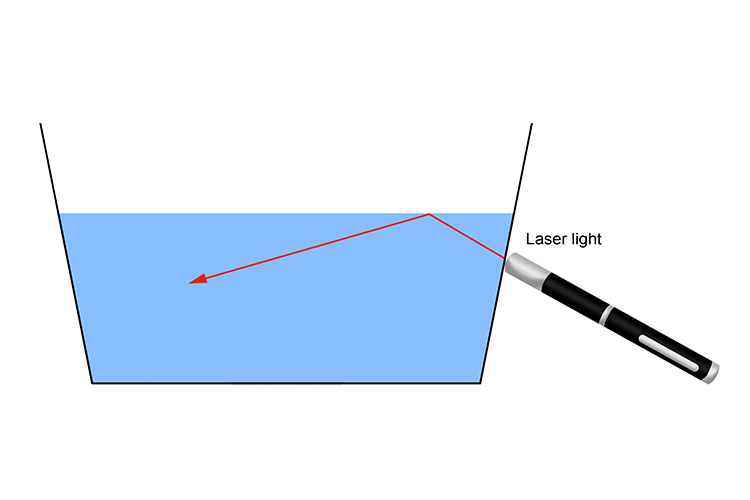
Large solid plastic coil
If your school physics lab has a coil of large solid plastic there is a very clear demonstration of total internal reflection that can be seen.
If you shine a laser light down the one end of the coil you will see the path of the laser light all the way through the solid tube even though it is coiled.
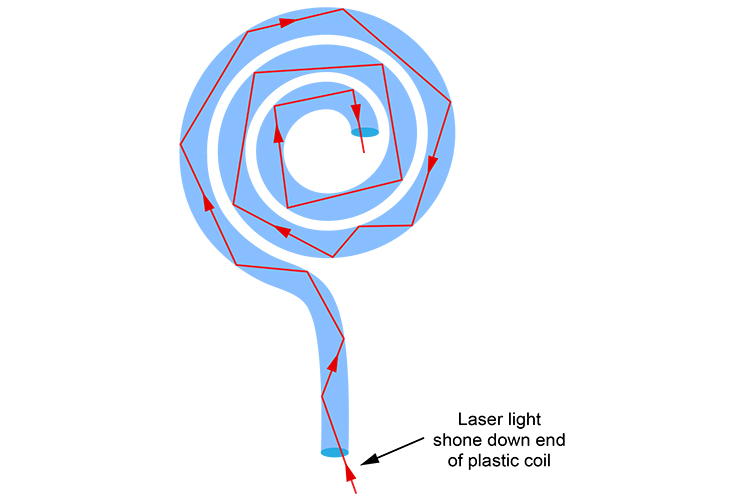
Optical fibre cables work on exactly the same principle and directed laser lights are used to communicate electronic signals in the form of rays of light. This relies entirely on total internal reflection.
Fibre optic cables are made of a plastic and glass polymers with cables which can get as thin as a human hair.
Benefits of fibre optic cables include
- They can carry far more information over the same cross-sectional area than copper wire.
- Optical fibres can carry light rays over long distances with little losses compared to copper wires.
- Optical fibres are not affected by electromagnetic losses which are a big problem with metal wires.
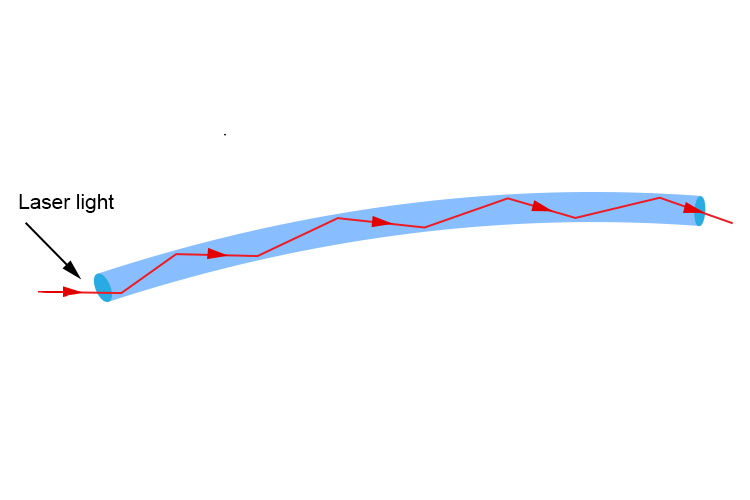
Optical fibres work because of total internal reflection.
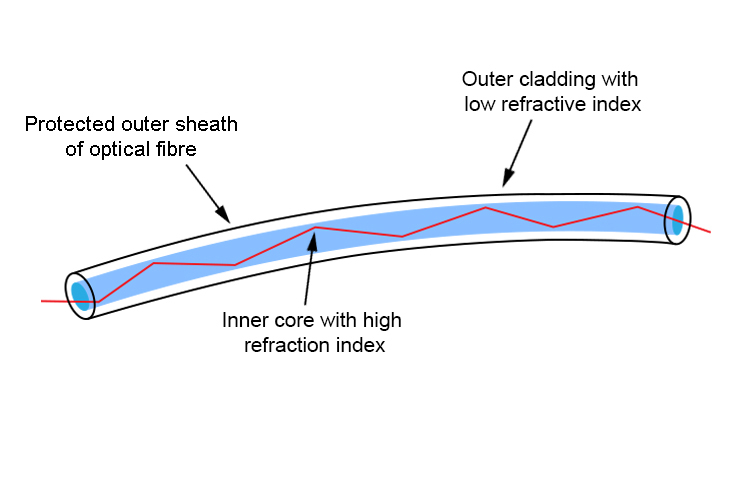
NOTE: Quite often the optical fibre cable is covered in a transparent protective medium. That medium is always of a lower index of refraction, otherwise total internal reflection doesn't work.
Large bottle of water
Take a large plastic bottle, drill a hole in the side and fill the hole with a cork. Fill the bottle with water, shine a laser through the bottle and pull out the cork. Direct the laser light into the stream of water, as shown below.

The laser light becomes trapped in the stream of water. With the denser medium (water) against air and the beam of light angled at more than the critical angle, we get total internal reflection.
Optical fibres
Of course, if you have the resources you could also observe how light images can be bent around corners.
If you have a fibre optic cable made up of thousands of strands of only a hair's width, you can see around corners if the cable is bent.
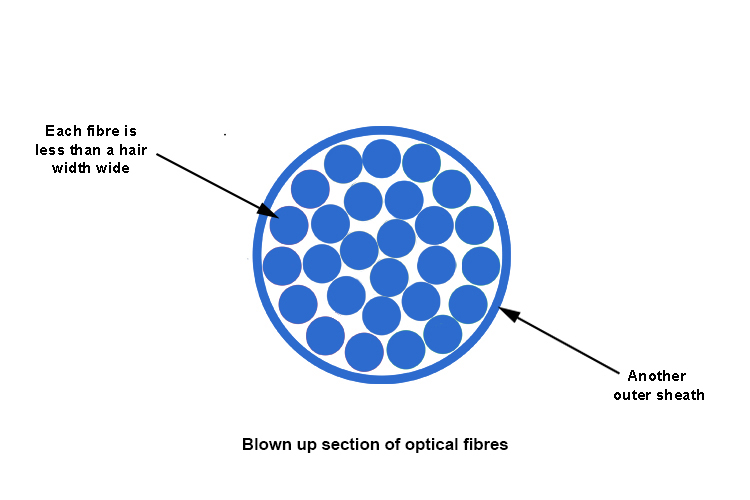
You can observe how images can bend around corners.





